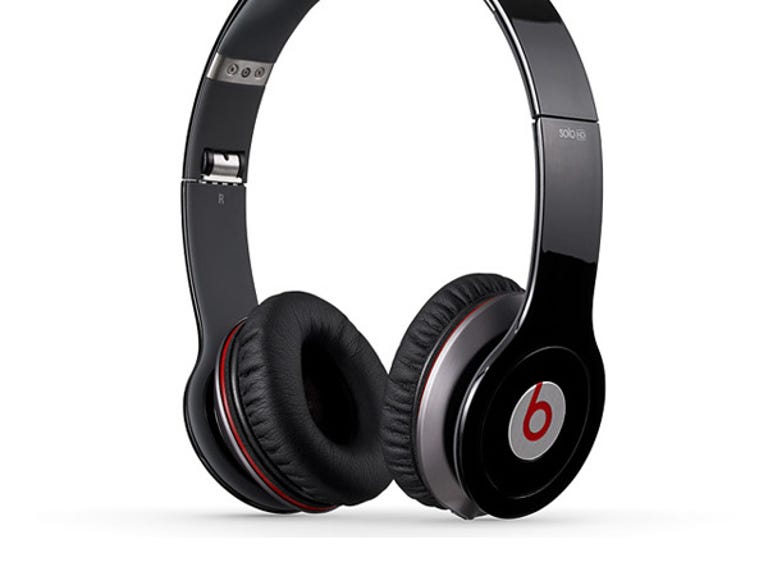 Why You Can Trust CNET
Why You Can Trust CNET Beats Solo HD Headphones review: Beats Solo HD headphones
The Beats by Dr Dre Solo HD headphones offer plenty of bass, convenient control and great styling, but are offset by too tight a grip on the head and a strange lack of higher tones.
Description
You really can't get any more "street style" in headphones than Beats by Dr Dre. This is a branding for Monster, originally an audiophile cable company, but which has been branching into additional areas. Dr Dre is apparently responsible for the sound characteristics of this range. The Solo HD is now the entry level of the range, the (non-HD) Solo having recently been retired.
The Good
The Bad
The Bottom Line
These are great-looking units, beautifully finished with gloss in a wide range of colours and clean lines. When not extended to fit your ears, the band and headphones form one smooth sweep of plastic. Yet, they also fold up into a reasonably compact size to fit into the well-padded carry pouch.
On top of the head, they have a smooth pad that is quite comfortable. They sit on the face of your ears (they're an "on-ear" design) and apply quite a bit of pressure, holding them in place for all but the wildest shakes of the head. They sealed quite well, and the closed design of the acoustics meant that they reduced noise from the surroundings quite significantly.
But we also found that the pressure on the ears tended to be a little uncomfortable over time.
The headphones come with two cables, both finished in red and both somewhat weighty (the lighter of the two weighs 21 grams alone, compared to a more typical 8 grams). They don't seem likely to come apart any time soon. They plug into a standard 3.5mm socket on the left hand earpiece. One of them is just a normal cable, while the other has an Apple in-line remote/microphone about 10 centimetres from the headphone connection. This was designed well so that within moments, we found it possible to make it do what we wanted by touch and with complete reliability. The other end of both cables is of the right-angle kind, making for a compact connection with a portable player.
There is no 3.5mm to 6.5mm headphone adaptor for component equipment included.
Performance
There are virtually no specifications given with these headphones. Not even the obvious things like sensitivity (how loud it will go with a given amount of power) and impedance. It was clear that the former was quite high and the latter quite low. We measured the nominal impedance of these headphones at around 16ohm, which is about as low as headphones go. The advantage of the low impedance is that it draws the maximum amount of power from the low-voltage output (typically around one volt, maximum) of portable players.
The disadvantage is that these players more readily drive into heavy distortion at low output loads.
But these headphones produce so much output that there was no danger of this. We were able to listen to Eminem's early collaborative effort with Dr Dre (The Slim Shady LP) at ridiculous levels with no undue distortion. You'd do damage to your hearing fairly quickly at these levels, though.
Despite these virtues, we really did not like the sound of these headphones. For all their pretensions of allowing you "to hear what the artists hear", they coloured it quite noticeably by mucking around with the frequency balance. In short, it was as though a gentle filter had been applied to the music, lowering the output the higher the frequency. We were half expecting there to be a boost in the bass, but this was more an attenuation of the treble.
There was a surprising amount of detail despite this, but the results varied wildly, depending on what was playing. Eminem sounded excellent, but The Who's Who's Next, when played loud, lost the clarity that normally marks this remastered album, creating a sort of mushy confusion. Switched on Bach sounded great, with very well extended and clean bass. The male voice on podcasts, and even the female one, were harder to understand because of the reduced levels of the harmonics in their voices, so we found that we had to turn the volume up higher than usual, which resulted in a strange kind of dynamic compression in the fundamental register of the male voice. It was all very strange.
Overall
In the end, we were keen to stop using these headphones because we knew they'd be biasing our hearing, which would then perceive even the most accurate headphones as having a tizzy top end.
Which is a pity, because their build and practical nature was otherwise so very, very good.


